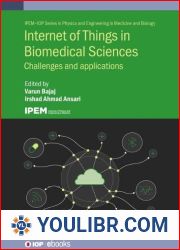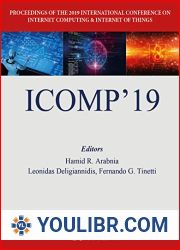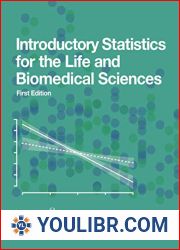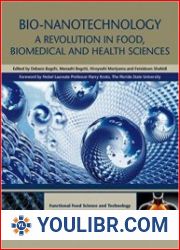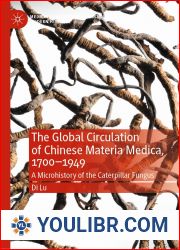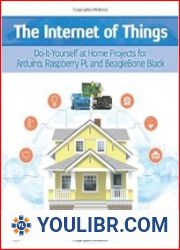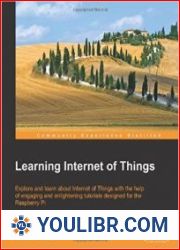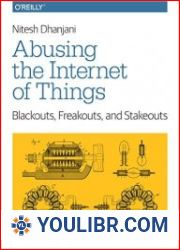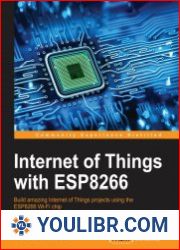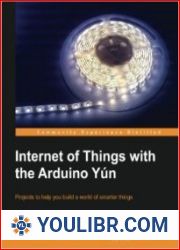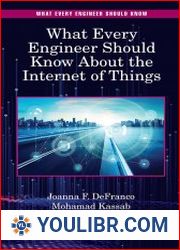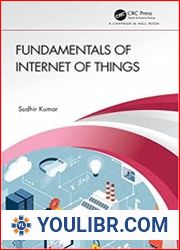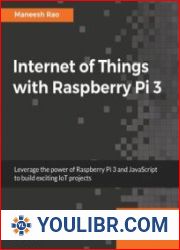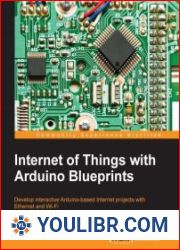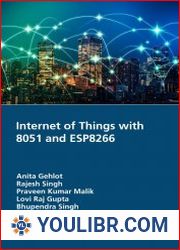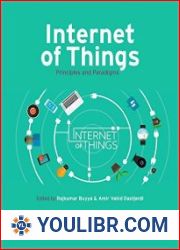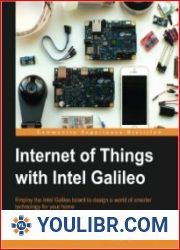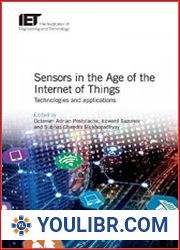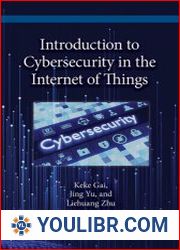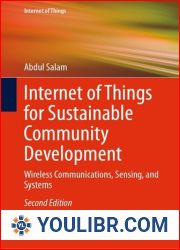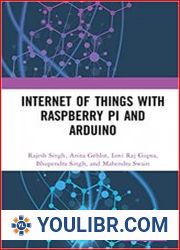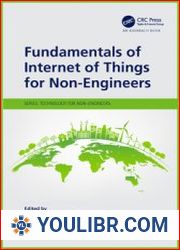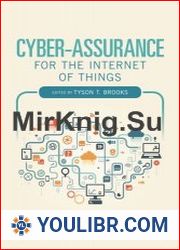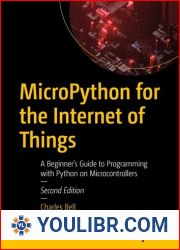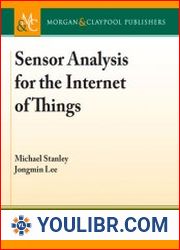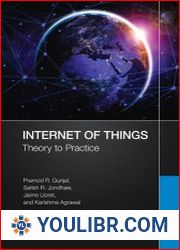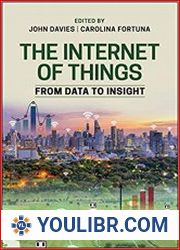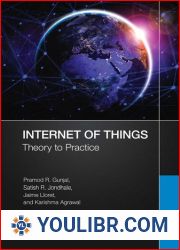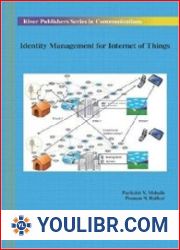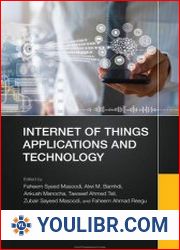
BOOKS - Internet of Things in Biomedical Sciences: Challenges and Applications

Internet of Things in Biomedical Sciences: Challenges and Applications
Author: Varun Bajaj
Year: September 7, 2023
Format: PDF
File size: PDF 15 MB
Language: English
Year: September 7, 2023
Format: PDF
File size: PDF 15 MB
Language: English
The Internet of Things (IoT) has revolutionized the way we live and work, and its impact on the biomedical sciences has been particularly significant. The book "Internet of Things in Biomedical Sciences: Challenges and Applications" provides a comprehensive overview of the IoT's role in the field of biomedicine, highlighting its potential benefits and challenges. From wearable devices that monitor our health to implantable sensors that track our vital signs, the IoT has transformed the way we approach healthcare. However, this technology also raises important ethical and social questions about privacy, data security, and the potential for misuse. The book begins by exploring the concept of IoT and its relevance to biomedicine, discussing the various applications of IoT in healthcare and their potential impact on patient care. It then delves into the technical aspects of IoT, including sensor technologies, communication protocols, and data analytics, providing readers with a solid foundation for understanding the complexities of IoT in biomedicine. One of the key themes of the book is the need for interdisciplinary collaboration between engineers, computer scientists, and medical professionals to develop effective IoT-based systems. This requires an understanding of the clinical needs of patients and the ability to translate these needs into technological solutions. The authors emphasize the importance of considering the ethical implications of IoT use in biomedicine, such as data privacy and security concerns, as well as the potential for bias in algorithms used to analyze health data.
Интернет вещей (IoT) произвел революцию в том, как мы живем и работаем, и его влияние на биомедицинские науки было особенно значительным. Книга «Интернет вещей в биомедицинских науках: проблемы и приложения» дает всесторонний обзор роли IoT в области биомедицины, подчеркивая его потенциальные преимущества и проблемы. От носимых устройств, которые следят за нашим здоровьем, до имплантируемых датчиков, которые отслеживают наши жизненные показатели, IoT изменил наш подход к здравоохранению. Однако эта технология также поднимает важные этические и социальные вопросы о конфиденциальности, безопасности данных и возможности неправильного использования. Книга начинается с изучения концепции IoT и ее значимости для биомедицины, обсуждения различных применений IoT в здравоохранении и их потенциального влияния на уход за пациентами. Затем он углубляется в технические аспекты IoT, включая сенсорные технологии, коммуникационные протоколы и аналитику данных, предоставляя читателям прочную основу для понимания сложностей IoT в биомедицине. Одной из ключевых тем книги является необходимость междисциплинарного сотрудничества между инженерами, компьютерщиками и медицинскими работниками для разработки эффективных систем на основе Интернета вещей. Для этого необходимо понимание клинических потребностей пациентов и умение воплотить эти потребности в технологические решения. Авторы подчеркивают важность рассмотрения этических последствий использования IoT в биомедицине, таких как проблемы конфиденциальности и безопасности данных, а также возможность предвзятости в алгоритмах, используемых для анализа данных о здоровье.
Das Internet der Dinge (IoT) hat die Art und Weise, wie wir leben und arbeiten, revolutioniert, und seine Auswirkungen auf die biomedizinischen Wissenschaften waren besonders bedeutend. Das Buch „Internet der Dinge in den biomedizinischen Wissenschaften: Herausforderungen und Anwendungen“ gibt einen umfassenden Überblick über die Rolle des IoT in der Biomedizin und hebt seine potenziellen Vorteile und Herausforderungen hervor. Von Wearables, die unsere Gesundheit überwachen, bis hin zu implantierbaren Sensoren, die unsere Vitalfunktionen verfolgen, hat das IoT unseren Ansatz im Gesundheitswesen verändert. Diese Technologie wirft jedoch auch wichtige ethische und soziale Fragen zu Datenschutz, Datensicherheit und Missbrauchsmöglichkeiten auf. Das Buch beginnt mit einer Untersuchung des Konzepts des IoT und seiner Bedeutung für die Biomedizin, einer Diskussion der verschiedenen Anwendungen des IoT im Gesundheitswesen und ihrer möglichen Auswirkungen auf die Patientenversorgung. Anschließend werden die technischen Aspekte des IoT, einschließlich Sensortechnologie, Kommunikationsprotokolle und Datenanalyse, vertieft, um den sern eine solide Grundlage für das Verständnis der Komplexität des IoT in der Biomedizin zu bieten. Eines der Hauptthemen des Buches ist die Notwendigkeit einer interdisziplinären Zusammenarbeit zwischen Ingenieuren, Informatikern und Medizinern, um effiziente IoT-basierte Systeme zu entwickeln. Dies erfordert ein Verständnis der klinischen Bedürfnisse der Patienten und die Fähigkeit, diese Bedürfnisse in technologische Lösungen umzusetzen. Die Autoren betonen die Bedeutung der Berücksichtigung der ethischen Implikationen der Verwendung von IoT in der Biomedizin, wie Datenschutz- und Datensicherheitsprobleme, sowie die Möglichkeit von Verzerrungen in Algorithmen, die zur Analyse von Gesundheitsdaten verwendet werden.
''
Nesnelerin İnterneti (IoT), yaşama ve çalışma biçimimizde devrim yarattı ve biyomedikal bilimler üzerindeki etkisi özellikle önemli oldu. Biyomedikal Bilimlerde Nesnelerin İnterneti: Zorluklar ve Uygulamalar kitabı, IoT'nin biyotıp alanındaki rolüne kapsamlı bir genel bakış sunarak, potansiyel faydalarını ve zorluklarını vurgulamaktadır. Sağlığımızı izleyen giyilebilir cihazlardan hayati belirtilerimizi izleyen implante edilebilir sensörlere kadar, IoT sağlık hizmetlerine yaklaşımımızı değiştirdi. Bununla birlikte, teknoloji aynı zamanda gizlilik, veri güvenliği ve kötüye kullanım potansiyeli hakkında önemli etik ve sosyal soruları gündeme getirmektedir. Kitap, IoT kavramını ve biyotıp ile ilgisini keşfederek, sağlık hizmetlerinde IoT'nin farklı uygulamalarını ve bunların hasta bakımı üzerindeki potansiyel etkilerini tartışarak başlıyor. Daha sonra, duyusal teknoloji, iletişim protokolleri ve veri analitiği de dahil olmak üzere IoT'nin teknik yönlerini inceleyerek, okuyuculara biyotıp alanındaki IoT'nin karmaşıklıklarını anlamak için sağlam bir temel sağlar. Kitabın ana temalarından biri, verimli IoT tabanlı sistemler geliştirmek için mühendisler, bilgisayar bilimcileri ve tıp uzmanları arasındaki disiplinlerarası işbirliğine duyulan ihtiyaçtır. Bu, hastaların klinik ihtiyaçlarının anlaşılmasını ve bu ihtiyaçların teknolojik çözümlere dönüştürülebilmesini gerektirir. Yazarlar, biyotıp kullanımında IoT kullanmanın veri gizliliği ve güvenlik endişeleri gibi etik etkilerini ve sağlık verilerini analiz etmek için kullanılan algoritmalardaki önyargı potansiyelini dikkate almanın önemini vurgulamaktadır.
أحدثت إنترنت الأشياء (IoT) ثورة في الطريقة التي نعيش ونعمل بها، وكان تأثيرها على العلوم الطبية الحيوية مهمًا بشكل خاص. يقدم كتاب Internet of Things in Biomedical Sciences: Challenges and Applications نظرة عامة شاملة على دور إنترنت الأشياء في الطب الحيوي، ويسلط الضوء على فوائده وتحدياته المحتملة. من الأجهزة القابلة للارتداء التي تراقب صحتنا إلى المستشعرات القابلة للزرع التي تتبع علاماتنا الحيوية، غيرت إنترنت الأشياء الطريقة التي نتعامل بها مع الرعاية الصحية. ومع ذلك، تثير التكنولوجيا أيضًا أسئلة أخلاقية واجتماعية مهمة حول الخصوصية وأمن البيانات واحتمال إساءة الاستخدام. يبدأ الكتاب باستكشاف مفهوم إنترنت الأشياء وصلته بالطب الحيوي، ومناقشة التطبيقات المختلفة لإنترنت الأشياء في الرعاية الصحية وتأثيرها المحتمل على رعاية المرضى. ثم يتعمق في الجوانب التقنية لإنترنت الأشياء، بما في ذلك التكنولوجيا الحسية وبروتوكولات الاتصال وتحليلات البيانات، مما يوفر للقراء أساسًا صلبًا لفهم تعقيدات إنترنت الأشياء في الطب الحيوي. أحد الموضوعات الرئيسية للكتاب هو الحاجة إلى تعاون متعدد التخصصات بين المهندسين وعلماء الكمبيوتر والمهنيين الطبيين لتطوير أنظمة فعالة قائمة على إنترنت الأشياء. يتطلب هذا فهمًا للاحتياجات السريرية للمرضى والقدرة على ترجمة هذه الاحتياجات إلى حلول تكنولوجية. يؤكد المؤلفون على أهمية النظر في الآثار الأخلاقية لاستخدام إنترنت الأشياء في الطب الحيوي، مثل خصوصية البيانات والمخاوف الأمنية، واحتمال التحيز في الخوارزميات المستخدمة لتحليل البيانات الصحية.







